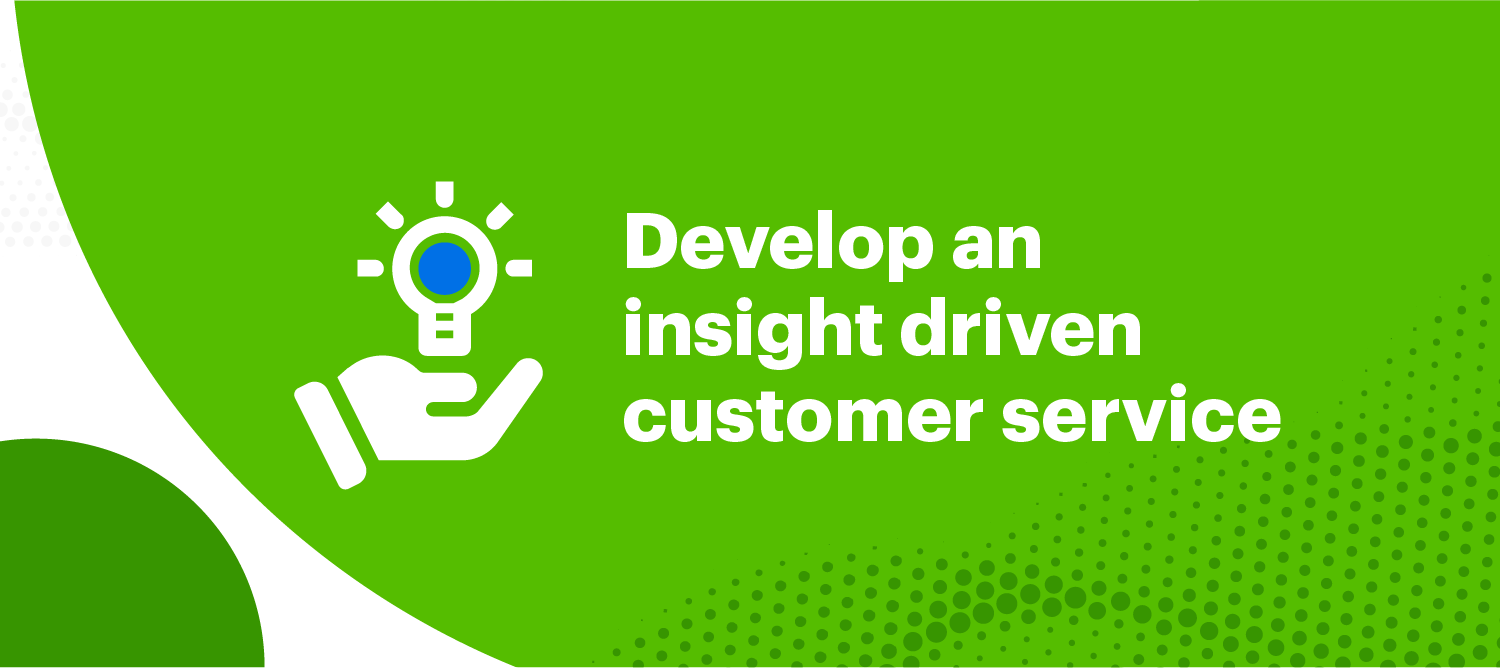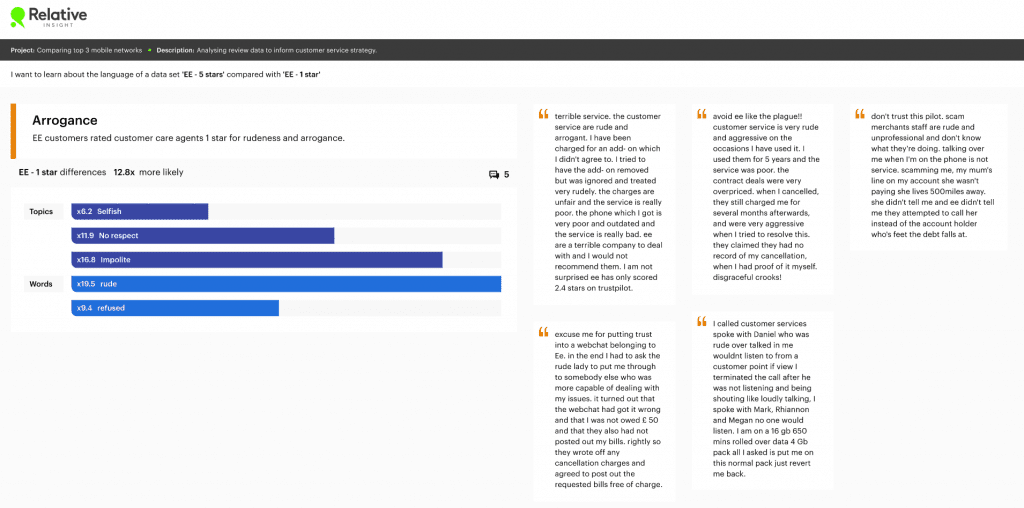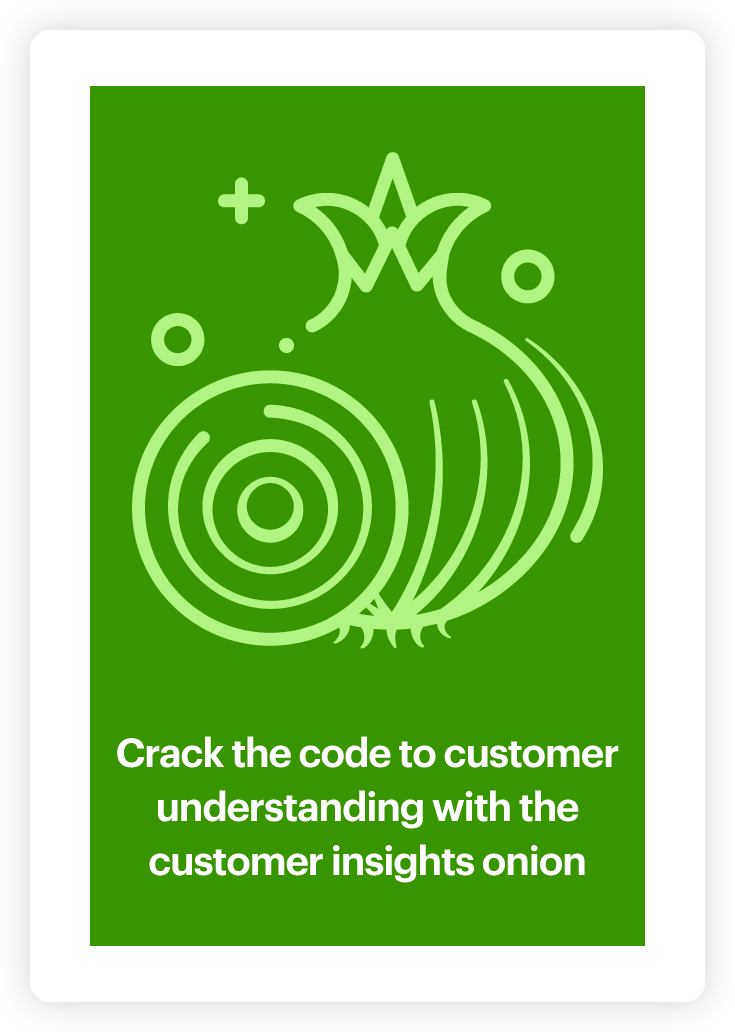Developing an insight-driven customer service strategy

In today’s digital world where customers are empowered by choice, it’s never been more important to develop a great customer service strategy.
Consumers want instant responses and resolutions to their problems, or they will simply take their business elsewhere. By creating an excellent customer experience and delivering on your customers’ expectations, you can win their loyalty for life.
What is customer service analytics?
Customer service analytics is the process of gathering specific types of customer feedback – contact center transcripts, chat support conversations or online reviews – and analyzing this data, with the express intent of surfacing actionable customer insights to improve your customer service strategy.
This form of analysis ensures a thorough, deep understanding of your customer base and help brands close the gap between customer needs, expectations and reality.
4 benefits of implementing a customer service strategy
In business, it’s not simply about the product or service you sell – it’s about how you make your customers feel when they interact with and buy from your brand. If you provide your customers with top-notch customer service, your business will reap the rewards.
But don’t just take our word for it. Consider these data-backed reasons why you should invest in your customer service strategy and team:
Competitive advantage
With the world at our fingertips (or should I say phone screens), customers have immediate access to every product and service they could possibly want, which means companies are having to compete harder for business.
According to research, 80% of consumers say they would rather do business with a competitor after experiencing bad customer service more than once. By investing in customer service strategy, businesses can create differentiation in the market and steal market share from notable competitors.
Customer loyalty
Research shows that 93% of customers are likely to make repeat purchases with companies who offer excellent customer service. When you invest in stellar customer service training and CX processes, you will create a team who customers can trust – people who embody your company values and brand mission. Building trust with the customer is at the crux of loyalty, which is why it’s important to develop a customer service strategy that places your target audience at its core.
Increased sales
When businesses prioritize a great customer service experience, they can grow revenues between 4% and 8%. The direct correlation between the influence of customer service and the profitability of a business is palpable.
Whether you’re a B2C, D2C or B2B business, the end goal is for customers to buy your product. That’s the bottom line. By analyzing customer feedback, you can find ways to improve your customer service strategy to continually meet and exceed your target audience’s expectations and ultimately drive sales.
Create brand champions
92% of global consumers trust recommendations from friends and family above all other marketing efforts, making customer testimonials the most cost-efficient and effective form of advertising. So how do you encourage your customers to recommend your brand? Implement a robust customer service strategy.
72% of customers will share a positive customer service experience with six or more people, spreading brand awareness and persuading others to engage with your brand. Not only do these customers give you a consistent revenue stream, but they provide a completely free way of acquiring new customers. Need we say more?
Using text analysis to improve your customer service strategy
When it comes to tracking customer satisfaction metrics, most businesses will place a lot of emphasis on quantitative data as a way of assessing the effectiveness of their strategy. By tracking Net Promoter Score (NPS), Customer Effort Score (CES), Customer Satisfaction Score (CSAT) or average time of resolution, companies can quickly measure how they are performing against set KPIs.
However, quantitative data often fails to provide context. While it tells you what is happening in regard to customer satisfaction, it fails to capture why. In contrast, qualitative data can add color to numerical data and help organizations understand what is driving positive or negative customer experience, particularly when it comes to customer service.
Better yet, organizations are highly likely to have access to huge volumes of qualitative data; untapped insights ready to be surfaced. Using text analytics solutions like Relative Insight, analyzing this data has never been easier.
Powered by NLP technology, our platform provides a scalable and efficient way to streamline qualitative data analysis. Relative Insight extracts meaningful insights from your NPS surveys, customer service call transcripts, chat support conversations and customer reviews that help you improve your customer service strategy.
Relative Insight x EE case study
5-star reviews vs 1-star reviews
To showcase how Relative Insight’s text analytics software unlocks customer service intelligence, we wanted to demonstrate our platform in action.
Taking online reviews of the UK’s most used mobile network, EE, we uploaded this text data to Relative Insight’s Explore module. Using the split functionality, we divided this data into two categories to compare: 1-star reviews and 5-star reviews. This comparison enables us to learn more about the customer experience and how EE can improve its strategy to provide better customer service.
Relative Insight Explore works by taking two or more text data sets and comparing them. Our technology pinpoints the words, phrases, topics, grammar and emotion that are statistically more prevalent in each data set. Here’s what we found.
Insights from 5-star reviews
Calm, confident, collected
People who left 5-star reviews for EE were 11.4x more likely to talk about the calm, understanding and polite manner of the customer care agent handling the call or chat conversation. Customers appreciated the friendly tone of EE’s customer service team and spoke about agents going the extra mile to listen and solve their problems.

Quick solution
Agents who received 5-star reviews showed a determination to resolve customer issues quickly and efficiently. Consumers used phrases such as really quick, resolved quickly and quick response 15.2x more in 5-star reviews, highlighting the impact of time to resolution on customer service experience.

Insights from 1-star reviews
No record found
In contrast, people who left 1-star reviews complained about EE’s lack of organization. We found countless messages from customers who claimed that the company had no records of previous phone calls and correspondence. This aggravated customers and only added to their existing issues.
To improve its customer service strategy, EE could put better processes in place to ensure agents thoroughly record all correspondence with customers in an organized system, that’s accessible both in-store and online.

Arrogant, rude agents
Our analysis also revealed that 1-star reviews were strongly influenced by negative attitudes of customer service representatives. Words such as selfish, rude and impolite were used to describe agents.
Off the back of these customer insights, EE could implement a training scheme that applies to both in-store and online employees, specifically regarding politeness and professionalism. To assess the impact of this change, EE should then run a time-based comparison looking at reviews before and after establishing the initiative.

If you’re inspired by that use case and are wondering how Relative Insight can enhance your customer service strategy, take a look at more customer insights examples and get in touch with our experts to put the platform through its paces.
